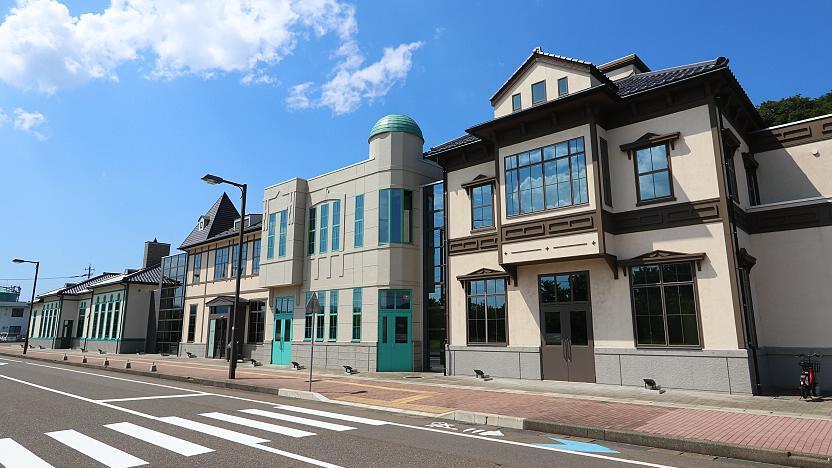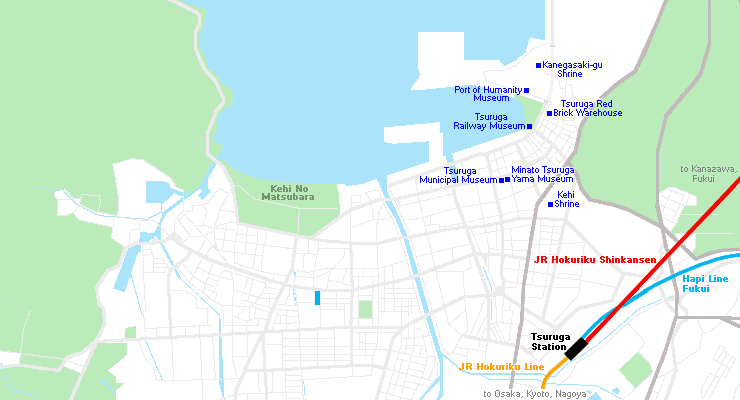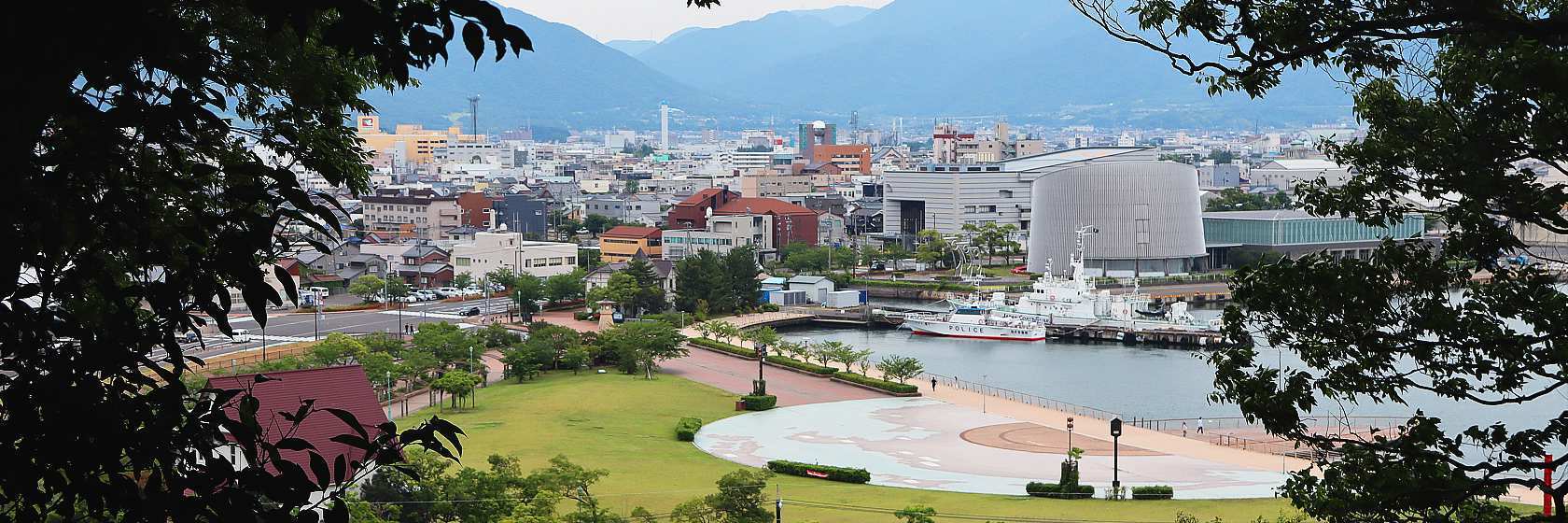Tsuruga (ōųēĻ) is a mid-sized city in southern Fukui Prefecture. The city is most famous for its port, which has been relevant both domestically and internationally over the centuries. More recently, it gained prominence as the new terminal station of the Hokuriku Shinkansen, when the line was extended from Kanazawa to Tsuruga in March 2024.
Tsuruga's port played a central role in the city's development because it provided the easiest connection from the Sea of Japan to Kyoto, Japan's former capital (by land and water via Lake Biwako). As a result, Tsuruga became a thriving port along the Kitamaebune shipping route, Japan's most important shipping route during the feudal ages, which connected Hokkaido via the Sea of Japan, Shimonoseki and the Seto Inland Sea with Osaka.

Following Japan's forced opening to international trade and subsequent industrialization, the city's port flourished once again in the first half of the 1900s as the main departure point for travelers to Europe via Vladivostok and the Trans-Siberian Railway. However, the port's and city's importance faded as air travel gained popularity.
Although not a popular tourist destination, the city offers a peaceful atmosphere and a number of interesting attractions, all of which can be experienced in a single day.

Attractions around Tsuruga Port
A cluster of tourist attractions, including a few museums, is found around the Kanegasaki Park, a waterfront park at Tsuruga Port, which also offers free parking.
Attractions in central Tsuruga
Other attractions
While the eastern shore of Tsuruga Bay is heavily industrialized, the western shore is dominated by wooded hillsides with several sandy beaches.
Getting there and around
How to get to Tsuruga
From Fukui City
Tsuruga and Fukui are connected by the Hokuriku Shinkansen (15 minutes, 2730 yen one way for an unreserved seat, covered by the Japan Rail Pass).
From Tokyo
Take a Hikari train along the JR Tokaido Shinkansen from Tokyo to Maibara (130 minutes) and then the JR Shirasagi limited express to Tsuruga (30 minutes). The entire one way journey takes just under three hours, costs around 13,000 yen and is fully covered by the Japan Rail Pass. This route via Maibara remains the faster and cheaper connection between Tokyo and Tsuruga despite the extension of the Hokuriku Shinkansen (a direct shinkansen train ride would take over three hours and cost around 16,000 yen one way).
From Kyoto and Osaka
Osaka, Shin-Osaka, Kyoto and Tsuruga stations are connected by twice hourly JR Thunderbird limited express trains. The one way journey takes about 80 minutes and 4700 yen from Osaka and about 50 minutes and 3400 yen from Kyoto. It is fully covered by the Japan Rail Pass. Seat reservations are required on Thunderbird limited express trains.
How to get around Tsuruga
Good walkers can reach the port area in about 30 minutes from Tsuruga Station. Alternatively, there is a tourist loop bus, the Gurutto Tsuruga Shyūyū Bus, which connects Tsuruga Station with all sites of interest once per hour on weekdays and twice per hour on weekends and national holidays. The fare is 200 yen per ride or 500 yen for a 1-day pass.

Questions? Ask in our forum.











